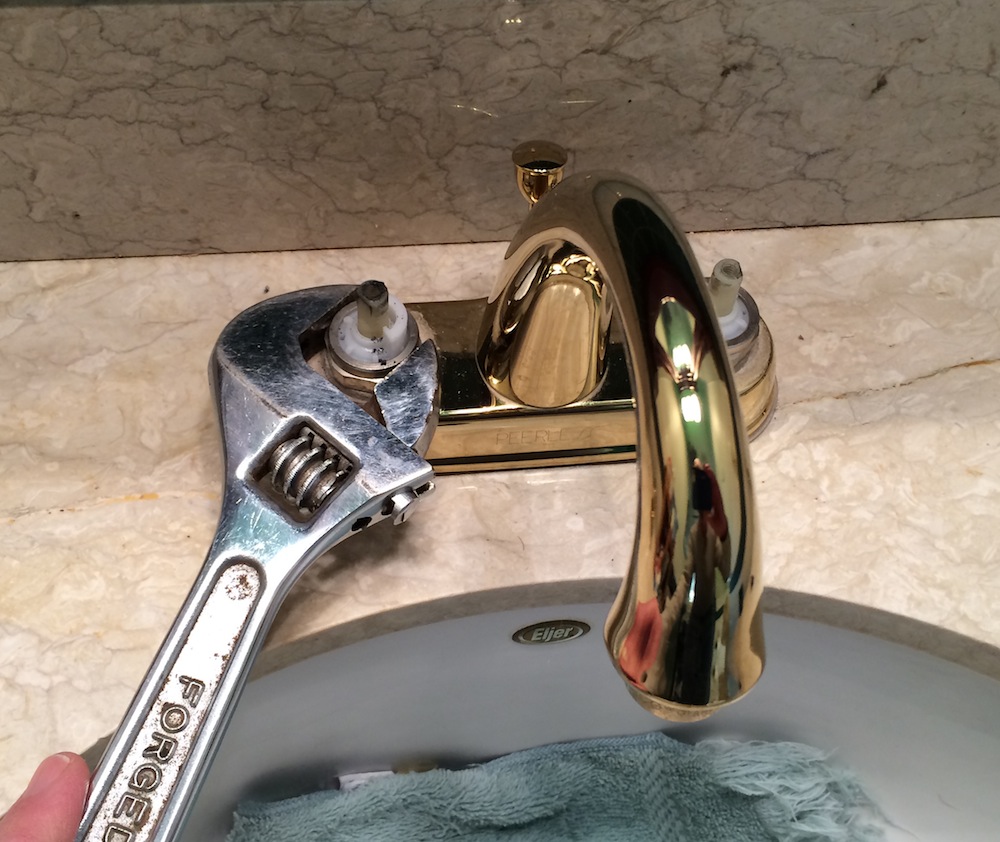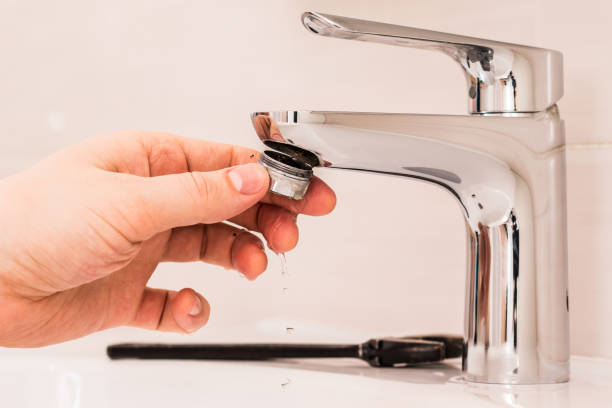When It's Essential to Fix a Malfunctioning Faucet
When It's Essential to Fix a Malfunctioning Faucet
Blog Article
Listed here down the page you can locate additional extremely good additional info relating to Why Is It Important To Fix Your Leaking Tap/Faucet?.

Leaking taps may appear like a small inconvenience, however their influence exceeds simply the nuisance of the sound. From wasting water to incurring unneeded economic expenses and health and wellness risks, disregarding a dripping tap can cause various consequences. In this post, we'll look into why it's crucial to address this usual home concern immediately and effectively.
Waste of Water
Environmental Effect
Trickling faucets add considerably to water waste. According to the Epa (EPA), a solitary faucet leaking at one drip per secondly can throw away more than 3,000 gallons of water annually. This not just pressures water sources but also impacts ecological communities and wildlife dependent on them.
Step-by-Step Guide to Dealing With a Dripping Faucet
Tools Required
Before attempting to fix a dripping faucet, collect the necessary devices, consisting of a flexible wrench, screwdrivers, substitute parts (such as washing machines or cartridges), and plumber's tape.
Usual Tap Issues and Their Solutions
Determine the kind of faucet and the details problem causing the drip. Usual troubles include worn-out washing machines, corroded shutoff seats, or malfunctioning O-rings. Refer to supplier directions or online tutorials for detailed assistance on repairs.
Financial Expenses
Increased Water Expenses
Past the environmental influence, dripping taps can blow up water bills considerably. The built up waste over time equates right into greater utility expenses, which might have been stayed clear of with timely repair work.
Possible Building Damages
Moreover, prolonged trickling can cause damage to components and surfaces surrounding the tap. Water accumulation can trigger discoloration, corrosion, and even architectural concerns if left ignored, resulting in additional repair service costs.
Health and wellness Problems
Mold And Mildew and Mildew Growth
The continuous existence of dampness from a leaking faucet develops a perfect environment for mold and mildew and mildew development. These fungis not only endanger indoor air top quality but additionally position health threats, particularly for people with respiratory problems or allergies.
Waterborne Illness
Stationary water in dripping taps can become a breeding ground for microorganisms and other microorganisms, raising the risk of waterborne illness. Impurities such as Legionella bacteria prosper in stationary water, possibly leading to major health problems when ingested or inhaled.
DIY vs. Expert Repair service
Pros and Cons of DIY Repair Work
While some may attempt to repair a leaking faucet themselves, DIY repair work include their own set of challenges. Without correct expertise and devices, do it yourself attempts can exacerbate the concern or bring about insufficient repair services, prolonging the issue.
Benefits of Working With an Expert Plumber
Hiring a specialist plumber ensures that the underlying source of the dripping faucet is attended to properly. Plumbers possess the experience and tools to detect and fix tap issues efficiently, saving time and minimizing the threat of additional damage.
Environmental Responsibility
Specific Payment to Preservation
Taking duty for repairing dripping taps aligns with more comprehensive efforts toward water preservation and ecological sustainability. Every individual's actions collectively make a significant influence on preserving precious resources.
Sustainable Living Practices
By prioritizing prompt fixings and embracing water-saving habits, people add to sustainable living practices that benefit both existing and future generations.
Preventive Measures
Normal Maintenance Tips
To stop dripping faucets, perform regular maintenance such as cleaning up aerators, evaluating for leaks, and replacing worn-out components without delay. In addition, take into consideration mounting water-saving gadgets or updating to more efficient fixtures.
Importance of Prompt Repair Works
Resolving trickling taps as soon as they're observed protects against additional water wastefulness and potential damages, eventually conserving both water and money in the long run.
Influence On Residential Or Commercial Property Value
Assumption of Well-Maintained Residential Or Commercial Property
Maintaining a residential or commercial property in good condition, including addressing upkeep concerns like trickling faucets, improves its viewed worth and worth among prospective purchasers or tenants.
Impact on Resale Worth
Features with properly maintained plumbing components, including faucets, command greater resale values in the realty market. Dealing with leaking faucets can contribute to a favorable impression during building inspections and negotiations.
Conclusion
Dealing with a leaking faucet goes beyond mere convenience; it's a necessary action toward conserving water, reducing monetary expenses, and securing health and wellness and property. Whether via DIY repair work or professional aid, doing something about it to take care of dripping faucets is a small yet impactful means to promote accountable stewardship of sources and add to a much healthier, a lot more lasting future.
How to Fix a Dripping or Leaky Faucet
A leaking faucet is one of the most common problems that homeowners encounter, but it being commonplace doesn’t make it any less annoying. The constant drip drip drip of a leaking bathtub faucet, showerhead, or sink tap can disturb your home’s serenity. Left neglected, a dripping faucet can also result in higher water bills and discoloration or mold growth in your sink or plumbing fixtures.
Fortunately, you don’t have to be a trained plumber to know how to stop a dripping faucet. With some basic tools, replacement parts, and a little patience, leaky faucet repair is a breeze. In this article, we’ll explain what causes dripping faucets and how you can fix them.
What Causes a Leaking Faucet?
Kitchen and bathroom faucets come in all manner of designs, but most involve some combination of valves, O-rings, seals, and washers. The O-ring is usually the weakest link, but any one of these pieces can wear down over time. Heat, moisture, temperature fluctuations, minerals, mold, and movement can contribute to warping and corrosion, breaking the watertight seal. This just comes with the territory of being a homeowner. Everything is always subject to wear and tear, and some component parts of your appliances and fixtures need to be replaced on occasion. At least replacement O-rings are cheap!
More rarely, dripping faucets can be a symptom of excessively high water pressure. Were this the case in your home, you would probably notice that the leak is not isolated to one faucet. Water pressure issues are harder to resolve on your own. We recommend contacting a professional plumber if you suspect your water pressure is too high.
How to Fix a Dripping Faucet
Pipe wrench or monkey wrench Allen wrench set Screwdrivers Old towel or rag Shut off the water.
Before you do anything, you need to turn off the water to keep from drenching your kitchen or bathroom. You should find a valve under the sink and against the wall. Once you’ve turned this valve, try turning the faucet on to confirm that the water source has been cut off.
If you can’t locate your local valve for the faucet you’re working on, you can always shut off the water to the house at the main valve. Of course, this will prohibit anyone from using the sinks, showers, or toilets while you’re working on the faucet that’s giving you trouble.
Plug or block the drain.
You’ll be disassembling the faucet and removing some small bits of hardware. Plug the drain with a stopper or rag to avoid the possibility of a small screw falling into your P-trap.
Take apart the faucet assembly.
There are several varieties of kitchen and bathroom faucets, each with its own manner of assembly. For detailed instructions on how to disassemble your faucet, you can refer to the fixture’s manual or contact the manufacturer. If you know whether you have a ball, disc, cartridge, or compression faucet, you can find detailed schematics online.
In general, you need to begin by removing the faucet handles. You might notice a small screw that you’ll need to remove with a screwdriver or Allen wrench. If you don’t see any visible securing hardware, it’s likely hidden under a decorative cap that can be unscrewed or popped off with flathead screwdriver.
Remove each piece methodically, consulting a schematic when necessary. Take notes or arrange the pieces in such a way to make it easier to correctly reassemble the faucet later.
Remove the cartridge.
Once you’ve removed the handles and securing hardware, you should be able to remove the valve cartridge or stem. Some cartridges will slide right out. Other faucet models will require you to loosen a nut with a pipe wrench before you can remove the valve stem.
Examine the exposed hardware.
With the cartridge or stem removed, inspect the component parts. Check the rubber O-rings for wear and tear. Also examine the seat washer for corrosion or other damage. These pieces are usually the responsible parties for a dripping faucet, but it’s worth inspecting the other component parts while you have the faucet disassembled.
Find replacement parts.
Once you’ve identified which faucet component has failed, find an identical replacement. Your local hardware store should have O-rings, seat washers, and other standard components in stock. If you have a luxury or uncommon faucet, you may have to contact the manufacturer for a replacement part.
It’s a good idea to take your old parts with you to the hardware store so you can compare them with the store’s inventory and be sure you’re purchasing the correct replacement.
Reassemble the faucet.
With your new parts in hand, reconstruct the faucet and handles. Don’t be tempted to overtighten screws or nuts. You might think this could create a better seal, but it can instead damage or bend a delicate part of the assembly and create a new problem for you.
Turn on the water and test the faucet.
The only thing left to do is test your work. Unplug the sink, turn the water back on, and try the faucet. Congratulate yourself on a job well done!
https://www.libertyhomeguard.com/how-to-fix-a-dripping-or-leaky-faucet/

I found that blog posting on Leaky Faucets: Why They Happen & What to Do About Them when doing a search on the web. Sharing is caring. You just don't know, you may just be helping someone out. Thanks for being here. Please come by our blog back soon.
Report this page